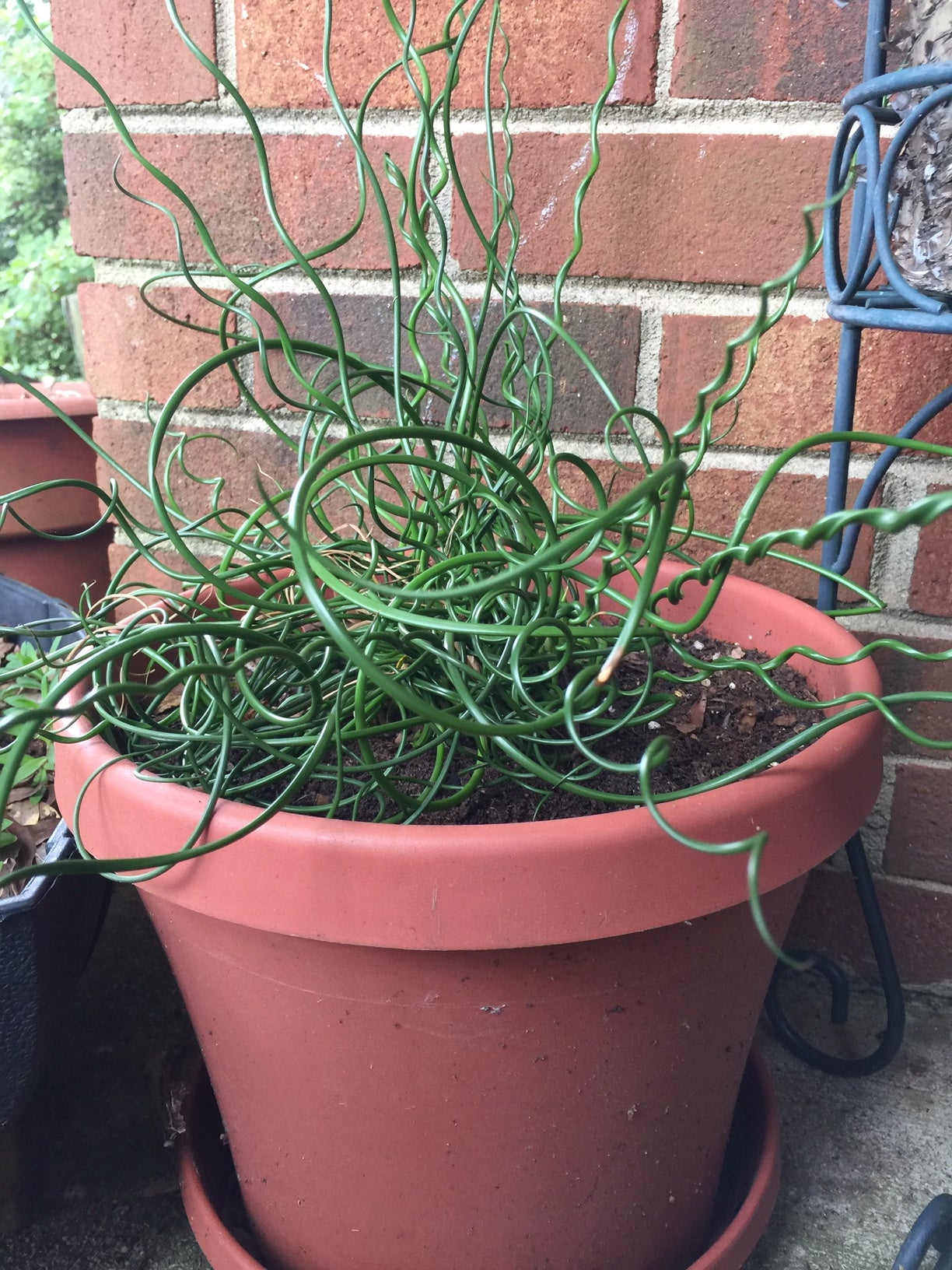Popular Curly Plants – Growing Plants That Twist And Turn


Most plants in the garden grow relatively straight, perhaps with a graceful curving aspect. However, you can also find plants that twist or curl and plants that grow in spirals. These uniquely twisted plants are sure to attract attention, but their placement has to be planned carefully. Read on for information on common twisted plants that make great additions in the landscape.
Common Twisted Plants
Twisty and curly plants are fun to look at but a little more difficult to position in a garden. Usually, they do best as the focal point and more than one in a small garden may be too much. Here are some of the more commonly seen “twisted” plants:
Corkscrew or Curly Plants
Plants that twist have stems that are contorted or grow in spirals like the contorted hazelnut (Corylus avellana ‘Contorta’). You may know this plant by its common name, Harry Lauder’s walking stick. This plant can grow 10 feet (3 m.) tall and twists curiously on a grafted hazelnut stem. Enjoy the unique shape; however, don’t expect very many nuts.
Another more common twisted plant is the corkscrew willow (Salix matsudana ‘Tortuosa’). The corkscrew willow is a small tree with an oval growth habit and is considered a specialty plant. It has narrow branch angles and interesting “corkscrew” branches with fine-textured leaves.
Then there is the whimsical plant known as corkscrew rush (Juncus effuses ‘Spiralis’). It grows from 8 to 36 inches (20-91 cm.). Cultivars have names like ‘Curly Wurly’ and ‘Big Twister.’ This is definitely a one-of-a-kind plant, with crazily twisted stems spiraling out in all directions. The curly stems are a lovely dark green, making a good backdrop for lighter colored plants.
Plants that Grow in Spirals
Plants that grow in spirals may not be as amusing as other curly plants, but their growth patterns are interesting. Many climbing vines are included in this category, yet not all spiral in the same direction.
Some climbing vines, like honeysuckle, spiral as they grow. Honeysuckle spiral clockwise, but other vines, such as bindweed, spiral counterclockwise.
Sign up for the Gardening Know How newsletter today and receive a free copy of our e-book "How to Grow Delicious Tomatoes".
You might think that plants that twist are influenced by sunlight or heat. In fact, researchers have found that the direction of the twist cannot be changed by external conditions.

Teo Spengler is a master gardener and a docent at the San Francisco Botanical Garden, where she hosts public tours. She has studied horticulture and written about nature, trees, plants, and gardening for more than two decades, following a career as an attorney and legal writer. Her extended family includes some 30 houseplants and hundreds of outdoor plants, including 250 trees, which are her main passion. Spengler currently splits her life between San Francisco and the French Basque Country, though she was raised in Alaska, giving her experience of gardening in a range of climates.